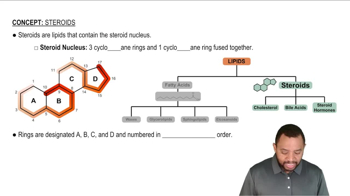Here are the essential concepts you must grasp in order to answer the question correctly.
Cyclic Alcohol Isomers
Cyclic alcohol isomers are compounds that contain a ring structure with hydroxyl (-OH) functional groups. In the case of C₇H₁₄O, the cyclic structure can include a cyclohexane ring, which is a six-membered carbon ring, and additional carbon atoms or groups, such as a methyl group, attached to it. Understanding how to draw these isomers involves recognizing the different ways carbon atoms can be arranged while maintaining the cyclic structure.
Recommended video:
Structural Isomerism
Structural isomerism occurs when compounds have the same molecular formula but differ in the arrangement of atoms. For C₇H₁₄O, various structural isomers can be formed by changing the position of the hydroxyl group and the methyl group on the cyclohexane ring. This concept is crucial for identifying all possible configurations that satisfy the molecular formula while adhering to the rules of organic chemistry.
Recommended video:
Structural Formula Concept 2
Cyclohexane Ring Stability
The stability of a cyclohexane ring is influenced by the arrangement of substituents, such as methyl and hydroxyl groups. The chair conformation of cyclohexane minimizes steric strain and allows for optimal positioning of substituents. Understanding the stability of different isomers helps in predicting which configurations are more favorable and how they can be represented in structural drawings.
Recommended video:
 Verified step by step guidance
Verified step by step guidance Verified Solution
Verified Solution



 1:1m
1:1m